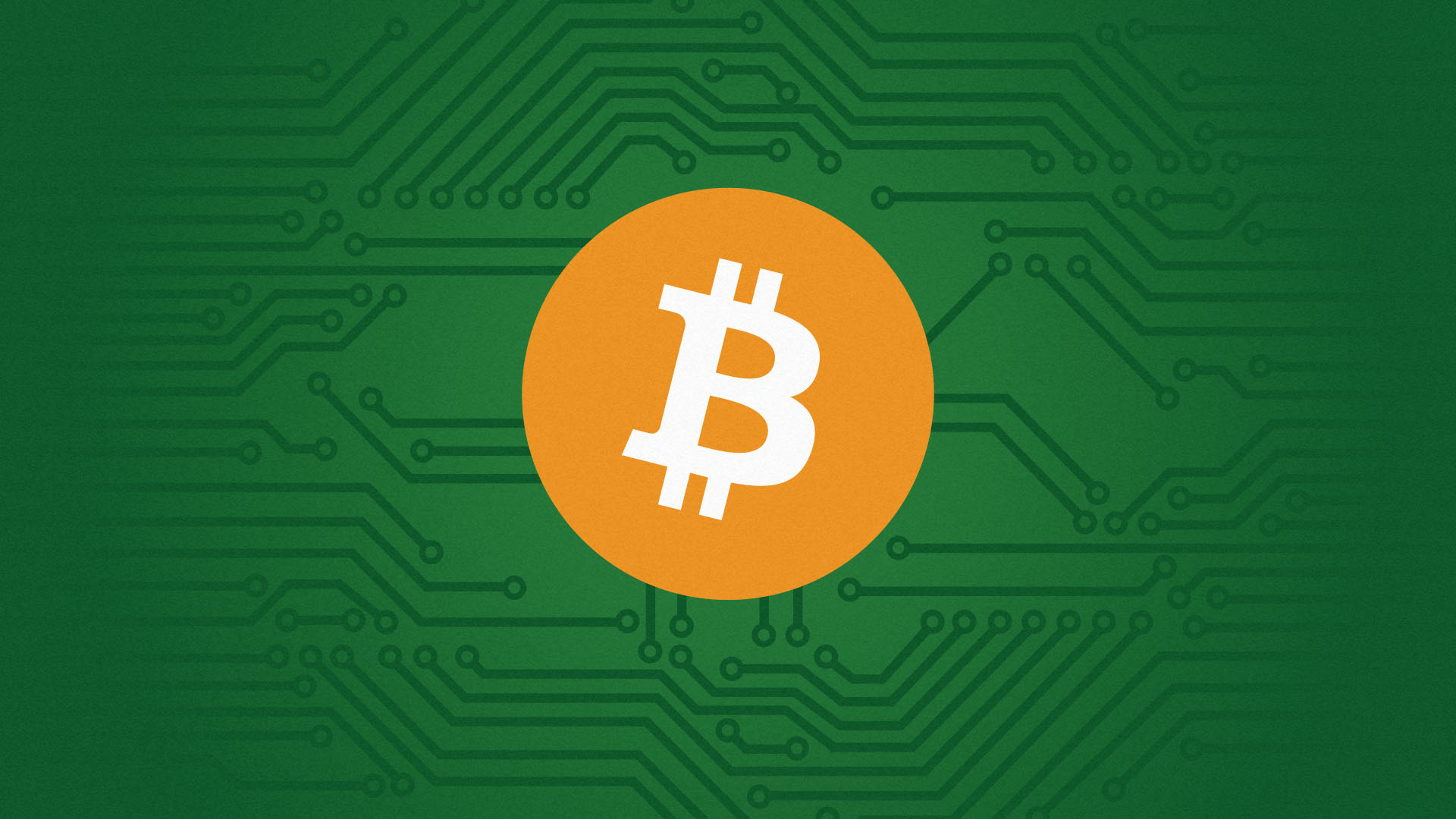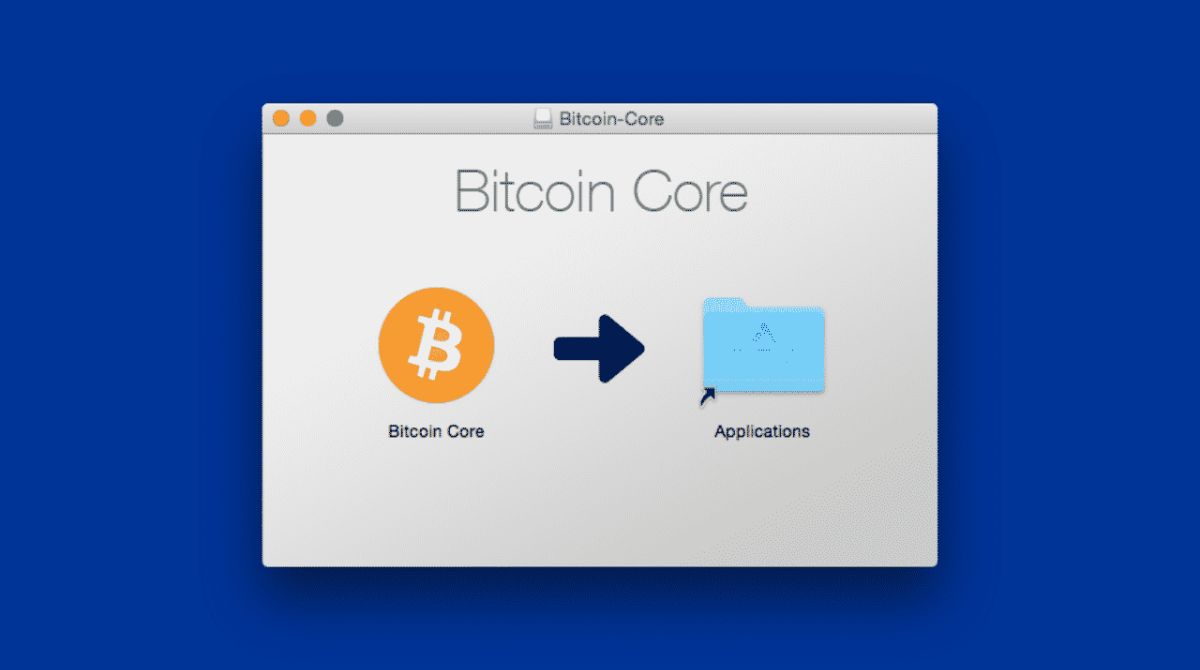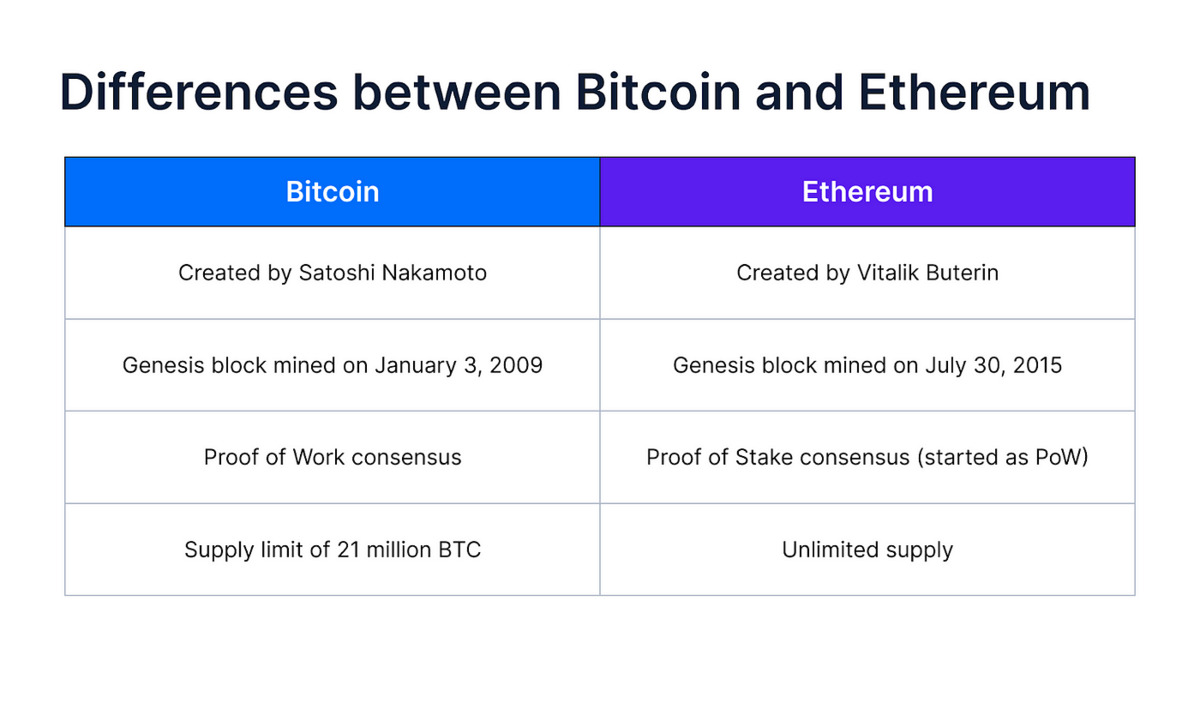Introduction
Welcome to the world of Bitcoin Core, the software that powers the most popular and widely used cryptocurrency, Bitcoin. If you’re curious about Bitcoin’s underlying technology and how it securely stores its transaction history, known as the blockchain, you’ve come to the right place.
In this article, we’ll dive into the fascinating world of Bitcoin Core and explore where it stores the blockchain. But before we get into the specifics, let’s take a step back and understand what Bitcoin Core is and why it plays a crucial role in the Bitcoin ecosystem.
Bitcoin Core is the reference implementation of the Bitcoin protocol. It is an open-source project that serves as the backbone of the Bitcoin network, allowing users to send and receive Bitcoins securely. Bitcoin Core not only provides a user-friendly interface to interact with the Bitcoin network but also acts as a full node that verifies and validates all the transactions on the network. In short, Bitcoin Core is the software that ensures the integrity and security of the Bitcoin network.
Now that we have a basic understanding of Bitcoin Core, let’s delve into the blockchain, which is at the heart of Bitcoin’s decentralized architecture.
The blockchain can be thought of as a digital ledger that records all the transactions ever made with Bitcoin. It is a distributed and decentralized database that is shared across a network of computers or nodes. Every transaction that occurs on the Bitcoin network is added to a block, which is then linked to the previous block. This results in a sequential chain of blocks, hence the name blockchain.
So why is it important for Bitcoin Core to store the blockchain? The answer lies in the decentralization and security aspect of Bitcoin. By storing the blockchain locally, Bitcoin Core eliminates the need for users to trust a centralized party for verifying transactions. Every user running Bitcoin Core has a complete copy of the blockchain, making it difficult for any single entity to manipulate or tamper with the transaction history.
Now that we understand the importance of storing the blockchain, let’s explore where Bitcoin Core stores it and how it ensures the integrity and efficiency of the storage system.
What is Bitcoin Core?
Bitcoin Core is the reference implementation of the Bitcoin protocol and serves as the foundational software for the Bitcoin network. It was developed by Satoshi Nakamoto, the anonymous creator(s) of Bitcoin, and has since been maintained and improved by a team of dedicated developers.
Bitcoin Core is an open-source project, which means that anyone can view, modify, and distribute the software code. However, changes to the core protocol are subject to a rigorous review and testing process to ensure the stability, security, and consensus of the network.
One of the primary functions of Bitcoin Core is to validate and relay transactions on the Bitcoin network. As a full node, Bitcoin Core stores a complete copy of the blockchain, verifies the validity of incoming transactions, and propagates them to other nodes on the network. By doing so, Bitcoin Core helps maintain the decentralized nature of the Bitcoin network and ensures that all participants have access to the same transaction history.
Additionally, Bitcoin Core provides a graphical user interface (GUI) that allows users to interact with the Bitcoin network. Through the GUI, users can create new Bitcoin addresses, send and receive Bitcoins, and view their transaction history. The software also includes a built-in wallet that securely stores private keys, which are necessary for authorizing and signing Bitcoin transactions.
Bitcoin Core serves as the backbone of the Bitcoin ecosystem, acting as a reliable and trustworthy platform for users to engage with the digital currency. It has become the most widely used Bitcoin software by businesses, exchanges, and individuals alike, thanks to its robust features, security measures, and ongoing development.
Furthermore, Bitcoin Core enables users to participate in the governance of the Bitcoin network by proposing and voting on potential protocol changes. This decentralized decision-making process allows the community to adapt and improve the Bitcoin protocol over time, ensuring its longevity and relevance in the ever-evolving landscape of digital currencies.
In challenging the traditional financial system and empowering individuals with control over their own money, Bitcoin Core plays a pivotal role in the Bitcoin revolution. It continues to pave the way for financial innovation, offering a secure, transparent, and censorship-resistant alternative to traditional banking systems.
What is the blockchain?
The blockchain is a fundamental technology that underlies Bitcoin and many other cryptocurrencies. Simply put, the blockchain can be described as a decentralized and distributed ledger that records all the transactions ever made with a particular cryptocurrency, in this case, Bitcoin.
At its core, the blockchain is a chain of blocks, with each block containing a set of verified transactions. These blocks are tied together through cryptographic hashes, creating an immutable and transparent record of all transactions on the network.
One of the key features of the blockchain is its decentralized nature. Unlike traditional financial systems that rely on a central authority to verify and validate transactions, the blockchain operates on a network of computers or nodes spread across the globe. These nodes work together to validate transactions and maintain the integrity of the blockchain.
So, how does the blockchain achieve trust and security without a central authority? The answer lies in the consensus mechanism used by the network. In the case of Bitcoin, the consensus mechanism is called Proof of Work (PoW). Miners on the network compete to solve complex mathematical puzzles, and the first one to find a solution gets to add a new block to the blockchain. This process ensures that each block added to the blockchain is legitimate and that the majority of the network agrees on its validity.
Another notable characteristic of the blockchain is its transparency. Since every transaction is recorded and stored on the blockchain, anyone can view the transaction history. This level of transparency helps to foster trust among participants and prevents fraudulent activities.
Furthermore, the blockchain provides enhanced security compared to traditional centralized systems. The decentralized nature of the blockchain makes it resistant to hacking and manipulation. In order to tamper with a transaction recorded on the blockchain, an attacker would need to control the majority of the network’s computational power, which is highly unlikely and practically infeasible.
Overall, the blockchain revolutionizes the way transactions are conducted and verified. By eliminating the need for intermediaries and central authorities, it offers a more efficient, secure, and transparent method of transferring value. Beyond cryptocurrencies, the blockchain has immense implications in various industries, such as supply chain management, voting systems, and decentralized finance.
Now that we have a basic understanding of the blockchain, let’s explore why Bitcoin Core stores the blockchain and the significance of this storage.
Why does Bitcoin Core store the blockchain?
Bitcoin Core, as the reference implementation of the Bitcoin protocol, plays a crucial role in the decentralized nature and security of the Bitcoin network. One of its primary functions is to store the blockchain, the complete record of all Bitcoin transactions. But why does Bitcoin Core need to store the blockchain?
The main reason is to ensure trust and decentralization. Storing the blockchain locally on every Bitcoin Core full node eliminates the need to trust a centralized authority for transaction verification. Each node independently validates and verifies transactions, ensuring the integrity and immutability of the blockchain. This decentralized validation process is essential for maintaining the security and transparency of the Bitcoin network.
Moreover, Bitcoin Core stores the blockchain to allow users to have full control over their funds. By having a local copy of the blockchain, users can validate their own transactions and verify the balances in their wallets without relying on third-party services. This self-sovereignty aligns with the core principles of Bitcoin and empowers individuals to be in control of their financial transactions.
Another reason for storing the blockchain is to enable efficient and reliable transaction processing. With a local copy of the blockchain, Bitcoin Core can quickly access transaction history, perform advanced queries, and process new transactions in real-time. This fast and efficient processing ensures that Bitcoin Core users can send and receive transactions seamlessly without relying on external sources or delays.
Furthermore, storing the blockchain locally on Bitcoin Core helps in the overall stability and resilience of the network. By having a distributed network of full nodes storing the blockchain, the Bitcoin network becomes more resistant to attacks and censorship. Even if some nodes go offline, the network can continue to function and verify transactions, ensuring the uninterrupted operation of the Bitcoin ecosystem.
Lastly, by storing the blockchain, Bitcoin Core enables users to participate in the consensus and governance of the network. Full nodes with a complete copy of the blockchain can validate proposed changes to the Bitcoin protocol and signal their support or opposition. This decentralized decision-making process ensures that changes to the Bitcoin network are agreed upon by the majority of the network participants.
In summary, Bitcoin Core stores the blockchain to maintain the decentralized nature, trust, and security of the Bitcoin network. It allows users to have control over their funds, enables efficient transaction processing, enhances network stability, and fosters decentralized decision-making. Now let’s explore where Bitcoin Core stores the blockchain and how it manages this storage.
Where does Bitcoin Core store the blockchain?
Bitcoin Core stores the blockchain locally on the user’s computer. When you install Bitcoin Core, it creates a data directory on your device where it stores all the necessary files related to the blockchain. The specific location of this data directory depends on the operating system you are using.
On Windows, Bitcoin Core typically stores the blockchain in the following directory:
C:\Users\YourUsername\AppData\Roaming\Bitcoin\
On macOS, the default location for the blockchain data is:
/Users/YourUsername/Library/Application Support/Bitcoin/
For Linux users, the blockchain data is stored in:
/home/YourUsername/.bitcoin/
Inside the Bitcoin data directory, you will find various files that make up the blockchain. The two most important files are:
- blocks: This file contains all the individual blocks that make up the blockchain. Each block is sequentially numbered and contains a list of transactions.
- chainstate: This file maintains the current state of the blockchain, including the current balances and unspent transaction outputs (UTXOs).
It’s worth noting that the blockchain data directory can occupy a significant amount of disk space, as the blockchain itself grows larger with each new block added. As of writing this article, the size of the Bitcoin blockchain is several hundred gigabytes, and it continues to increase over time.
To ensure efficient storage and retrieval of blockchain data, Bitcoin Core also utilizes an indexed database called LevelDB. This database helps in optimizing the lookup and retrieval of transaction data, allowing for faster syncing and transaction processing.
It’s important to regularly back up your blockchain data directory, as it contains your Bitcoin wallet and transaction history. Losing or corrupting this data could result in the loss of your funds. By regularly creating backups, you can avoid such risks and easily restore your wallet in case of any unforeseen circumstances.
Now that we know where Bitcoin Core stores the blockchain, let’s explore the various components that make up the blockchain storage system and how they work together.
How does Bitcoin Core store the blockchain?
Bitcoin Core utilizes a combination of data structures and storage mechanisms to efficiently store and manage the blockchain. These components work together to ensure the integrity, security, and accessibility of the blockchain data.
The primary storage mechanism used by Bitcoin Core is a combination of flat files and a LevelDB database. Let’s dive deeper into the specific components:
- Block storage format: Bitcoin Core stores each block in a binary format. This format includes the block header, which contains metadata such as the block’s hash, timestamp, and difficulty. It also includes the block’s transactions, represented as raw data.
- Block index: To facilitate efficient retrieval of blocks, Bitcoin Core maintains an index of blocks. This index helps with fast lookup of blocks based on their block height or block hash. The block index also contains metadata about each block, such as the location of the block’s data within the blockchain files.
- Chainstate: The chainstate is a crucial component that stores the current state of the blockchain. It maintains a set of unspent transaction outputs (UTXOs), which are essential for verifying the validity of new transactions. The chainstate data is regularly updated as new blocks are added to the blockchain.
By using these components, Bitcoin Core ensures that the blockchain data is stored in an organized and efficient manner. The block storage format allows for compact representation and serialization of blocks, while the block index and chainstate enable easy lookup and validation of transactions.
Additionally, Bitcoin Core implements various optimizations to improve the performance and scalability of the blockchain storage system. For instance, it utilizes a technique called pruning, which allows users to discard older blocks and reduce the storage requirements. Pruning is especially useful for users with limited disk space or who don’t need to maintain a complete copy of the blockchain.
Moreover, Bitcoin Core supports a mechanism called block downloading and verification in parallel. This feature allows the software to download blocks from multiple peers simultaneously, accelerating the initial syncing process and reducing the time required to catch up with the latest blockchain state.
Another important aspect of blockchain storage is the need for regular backups. Bitcoin Core provides mechanisms to create backups of the blockchain data directory, including the wallet and transaction history. Backing up this data is crucial in order to protect against data loss or corruption.
In essence, Bitcoin Core employs a combination of file-based storage, a LevelDB database, and specialized data structures to store and manage the blockchain. These storage mechanisms ensure that the blockchain data is efficiently stored, easily accessible, and continuously updated as new blocks are added to the network.
Now that we have explored how Bitcoin Core stores the blockchain, we can appreciate the underlying infrastructure that allows for the secure and decentralized operation of the Bitcoin network.
Block storage format
The block storage format is a vital component of how Bitcoin Core stores individual blocks in the blockchain. It defines the structure in which the block data is stored in the blockchain files, allowing for efficient storage and retrieval of block information.
Each block in the blockchain consists of two main parts: the block header and the block transactions. The block header contains essential metadata about the block, including its unique hash, timestamp, nonce value, and the hash of the previous block in the chain. On the other hand, the block transactions section contains a list of transactions that have been confirmed and added to the block.
In the block storage format, the block header is stored in a fixed-size structure that contains specific fields, such as the version number, the Merkle root of the transactions, the difficulty target, and other relevant information. This standardizes the representation of block headers, making it easier for Bitcoin Core to verify block validity and process new blocks efficiently.
The block transactions section, also known as the transaction data, is stored as raw data in a serialized form. This allows for compact storage of transaction information, minimizing the storage requirements of the blockchain. By serializing the transactions, Bitcoin Core can efficiently store a large number of transactions in the limited disk space available.
Additionally, the block storage format incorporates data compression techniques to further optimize the storage size of the block data. This compression mechanism reduces the size of transaction data without compromising the integrity of the data. By compressing the block data, Bitcoin Core not only saves disk space but also improves the efficiency of syncing the blockchain, as smaller data sizes can be transmitted more quickly over the network.
The block storage format also accounts for block indexing, which enables quick and efficient lookup of blocks based on their block height or block hash. By maintaining an index of block locations, Bitcoin Core can easily retrieve a specific block or navigate through the blockchain without having to traverse through the entire chain of blocks.
Overall, the block storage format in Bitcoin Core is designed to facilitate efficient storage and retrieval of block data while maintaining the integrity and security of the blockchain. It utilizes standardized block headers, serialized transaction data, compression techniques, and block indexing to ensure that the blockchain can be stored, accessed, and validated in an optimized and reliable manner.
Now that we have explored the block storage format, let’s delve into another important component of blockchain storage – the block index.
Block index
The block index is a crucial component of how Bitcoin Core manages and organizes the blockchain. It serves as an efficient lookup database that allows for quick retrieval of blocks based on their block height or block hash.
When Bitcoin Core is syncing the blockchain or processing new transactions, it needs to locate specific blocks in the blockchain. The block index provides a centralized location for the software to store metadata and indexing information about each block.
The block index is built based on the block headers of every block in the blockchain. Each block header contains important metadata such as the block’s hash, timestamp, difficulty target, and the hash of the previous block. The block index stores this information along with the exact location of the block data within the blockchain files.
By maintaining an index of blocks, Bitcoin Core can swiftly locate and retrieve a specific block when necessary. This efficient lookup mechanism allows for faster syncing of the blockchain, processing of new transactions, and validation of the blockchain’s integrity.
The block index is typically stored in memory to enable rapid access, as frequent disk reads would significantly slow down performance. However, Bitcoin Core also periodically writes the block index to disk to ensure synchronization with the blockchain files in case of system or software restarts.
One of the purposes of the block index is to provide a mapping between block heights and their corresponding block hashes. The block height represents the position of a block in the blockchain, while the block hash uniquely identifies each block. This mapping allows for efficient navigation of the blockchain, enabling Bitcoin Core to retrieve blocks based on their heights or verify the hash of a particular block.
The block index also plays a crucial role in ensuring the security and integrity of the blockchain. By maintaining an index of block headers, Bitcoin Core can verify the sequential validity of blocks and detect any tampering or manipulation attempts. This enhances the trustworthiness and reliability of the blockchain data stored by Bitcoin Core.
Moreover, the block index enables Bitcoin Core to efficiently handle chain reorganizations or forks in the blockchain. In the event of a blockchain fork, Bitcoin Core can quickly identify the valid chain based on the longest chain rule and update its internal state accordingly.
In summary, the block index serves as an essential component of Bitcoin Core’s blockchain management system. It provides quick and reliable access to blocks based on their block height or hash and ensures the security and integrity of the blockchain. With the block index, Bitcoin Core can efficiently navigate, validate, and process the blockchain, enabling seamless operation within the Bitcoin network.
Now let’s explore another crucial aspect of blockchain storage – the chainstate.
Chainstate
The chainstate is a vital component of how Bitcoin Core manages and maintains the current state of the blockchain. It represents the snapshot of the blockchain’s current state, including the balances and status of all unspent transaction outputs (UTXOs).
When a transaction occurs on the Bitcoin network, it results in the creation of new UTXOs and updates the status of existing UTXOs. The chainstate keeps track of these UTXOs, enabling efficient verification and validation of new transactions, as well as maintaining the overall integrity of the blockchain.
The chainstate data is stored in a LevelDB database, a key-value store used by Bitcoin Core for efficient storage and retrieval of data. The LevelDB database allows for fast and indexed access to the UTXOs, making it possible for Bitcoin Core to quickly determine the available balances for any given Bitcoin address.
The chainstate database is constantly updated as new blocks are added to the blockchain. When a block is added, Bitcoin Core checks the transactions within the block to identify which UTXOs are being spent and which are being created as new outputs. It updates the chainstate accordingly, ensuring that the UTXO set accurately reflects the current state of the blockchain.
By storing the UTXOs in the chainstate, Bitcoin Core can efficiently verify new transactions by checking if the inputs are valid and unspent. This process involves searching the chainstate for the relevant UTXOs and confirming that they have not been spent in previous transactions. If all inputs are valid, the transaction is considered valid and can be added to the blockchain.
The chainstate also plays a crucial role in the bitcoin wallet functionality provided by Bitcoin Core. The wallet uses the UTXO information stored in the chainstate to determine the balance of a particular Bitcoin address. This information allows users to view their available funds and make accurate decisions when sending or receiving Bitcoin.
Notably, the chainstate is significantly smaller in size compared to the complete blockchain data. This is because it only stores the current state of the UTXOs, whereas the complete blockchain includes the entire transaction history. The compact nature of the chainstate improves the efficiency of storage and retrieval, allowing Bitcoin Core to process transactions more quickly and consume fewer system resources.
It’s important to note that the chainstate is closely linked to the block storage format and the block index. Together, these components work in harmony to provide optimized storage, quick lookup, and efficient validation of blockchain data within Bitcoin Core.
In summary, the chainstate is a critical component of Bitcoin Core’s blockchain storage system. It maintains the current state of UTXOs, allowing for efficient verification and validation of transactions. The chainstate plays a key role in determining account balances, facilitating wallet functionality, and ensuring the overall integrity and efficiency of the Bitcoin network.
Now that we have explored the chainstate, let’s conclude by summarizing the key aspects of Bitcoin Core’s blockchain storage system.
Conclusion
In conclusion, Bitcoin Core, as the reference implementation of the Bitcoin protocol, plays a critical role in the secure and decentralized operation of the Bitcoin network. It stores the blockchain locally on each user’s computer, allowing for trustless verification of transactions without the need for a centralized authority.
The blockchain, a decentralized and distributed ledger, forms the foundation of Bitcoin’s transparent and immutable transaction history. Bitcoin Core stores the blockchain using a combination of flat files, a LevelDB database, and specialized data structures. This storage system ensures efficient retrieval, validation, and processing of block data.
The block storage format organizes blocks into a standardized structure, optimizing storage space and enabling fast serialization and deserialization of block data. The block index provides a convenient lookup mechanism based on block height or hash, facilitating quick access to specific blocks within the blockchain.
The chainstate maintains the current state of UTXOs, allowing for efficient verification and validation of transactions, as well as accurate balance calculations for Bitcoin addresses. Together, these components ensure the integrity, security, and accessibility of the blockchain data stored by Bitcoin Core.
Bitcoin Core’s blockchain storage system is designed for scalability, efficiency, and reliability. It supports mechanisms such as pruning to reduce storage requirements, parallel block downloading for faster synchronization, and regular backups to safeguard user data.
By storing the blockchain locally, Bitcoin Core empowers users to have control over their funds, participate in the consensus process, and contribute to the decentralized nature of the Bitcoin network. It provides a robust and trustworthy platform for users to interact with the world of cryptocurrencies.
As Bitcoin continues to evolve and gain prominence, Bitcoin Core’s role in storing and managing the blockchain becomes increasingly pivotal. Through ongoing development and innovation, Bitcoin Core continues to enhance the security, efficiency, and user experience of the Bitcoin network.
In summary, Bitcoin Core not only stores the blockchain but also ensures the integrity, security, and decentralization of the Bitcoin network. Its storage system, comprising the block storage format, block index, and chainstate, guarantees efficient access to blockchain data and reliable verification of transactions. By utilizing Bitcoin Core, users can engage with Bitcoin’s transformative technology and be part of the future of decentralized finance.

























